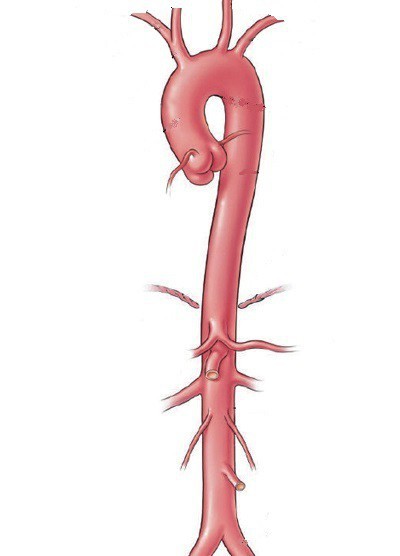Anatomy of the cervical vertebra, structure and function
The human spine consists of more than 30vertebrae, which are united into 5 departments. These are cervical, thoracic, lumbar, sacrum and coccyx. Each of the departments of the spine has its own functions and features of the structure. There is a division between the vertebrae, the false and the true. Sacrum and coccyx can be attributed to a group of false vertebrae.
Neck
How many cervical vertebrae differ from the rest? How do they look? These questions can easily be answered by knowing the structure of the spine.


Anatomy of the cervical vertebra, the first and second, is significantly different from all the others. Thanks to 1 and 2 vertebrae, a person can turn his head to the sides and make head inclinations.
Anatomy of the vertebra
The structure of the vertebrae is the same for all. Each vertebra has a body, an arch and appendages. The body is a thickened part of the vertebra, which is directed from above and below to other vertebrae; in front and laterally it is confined to a concave surface, posteriorly flattened.
The entire body of the vertebra is equipped with nutrient holes through which the vessels and nerve endings pass.

Zadebokovye facets of the body of the vertebra begin to narrow, forming a leg of the arch of the vertebra, which passes into the plate of the arch of the vertebra.
On the surfaces (upper and lower) legs there are corresponding vertebral notches. Adjoining adjacent vertebrae, they form an intervertebral foramen.
There are 7 processes on the arc of the vertebra. The spinous process is directed posteriorly. The remaining 6 paired. Upper articular, lower articular and transverse processes.
All 4 articular processes are equipped with articular surfaces. With their help, the adjacent vertebrae are articulated together.
Anatomy of the cervical vertebra
Cervical vertebrae in medicine are usually calledletter and number (the letter C and the number from 1 to 7). Vertebrae are characterized by low bodies dilated downwards. Surfaces of the body are concave (upper right to left, lower from front to back). In 3-6 vertebrae, elevated lateral margins are visible on the upper surface, which form the hook of the body.
The vertebral opening is triangular in shape, wide.
Articular processes in comparison with others, short, oblique, and their surfaces either slightly convex or flat.

Transverse processes are short, directed to the sides. A furrow runs along the top of each appendage. It divides the tubercles into the anterior and posterior, along which the spinal nerve passes.
Anatomy of the cervical vertebra is interestingdifferences. For example, in 6 vertebrae, the anterior tubercle is particularly developed. Close to him passes the carotid artery, which is pressed against the blood loss to him. Therefore, the tubercle is called sleepy.
Transverse processes are formed by two processes. The anterior one is the rudiment of the rib, the posterior is the process itself. Both processes are the orifice stops. The hole is called vertebral-arterial, because through it the vertebral artery and vein pass, and also the nervous sympathetic plexus.
Other vertebrae
The other vertebrae differ: the first cervical vertebra (atlant), the second (axial vertebra), the seventh (protruding vertebra).
First vertebra
The Atlantean does not have a body and a spinous process. The vertebra is represented as a ring formed by two arcs (front and back). These arcs are joined together by special lateral masses. Above, the oval concavity joins with the occipital bone, and from below with the almost flat surface of the second vertebra.
The anterior arch has a tubercle, the posterior one has a small articular area - the fossa of the tooth.

Anatomy of the cervical vertebra of the atlas has no analogues among others. Together with the 2 vertebrae, it forms a unique connection, allowing you to perform various head movements.
The second vertebra
The second vertebra is directed upward frombody tooth that ends with the tip (articulated with the pit of the tooth of the atlas with the anterior joint surface, the transverse ligament of the atlas is adjacent to the posterior articular surface).
A skull and the first cervical vertebra rotate around the tooth.
Transverse processes without tubercles and furrows of the spinal nerve.
Seventh vertebra
The protruding seventh cervical vertebra is different,that he has a long spinous process (undiluted). It is visible to the unaided eye and can easily be probed through the skin. Because of this feature and got its name. In addition, the vertebra also has long transverse processes. The holes of the same name are either small or absent.
The lower edge of the lateral surface of the body often has a facet (rib fossa). This is the so-called imprint of the joint with the head 1 of the rib.
All cervical vertebrae are strong and strong bones. Knowing their characteristics, you can easily determine the bone of the spine in appearance.
</ p>


